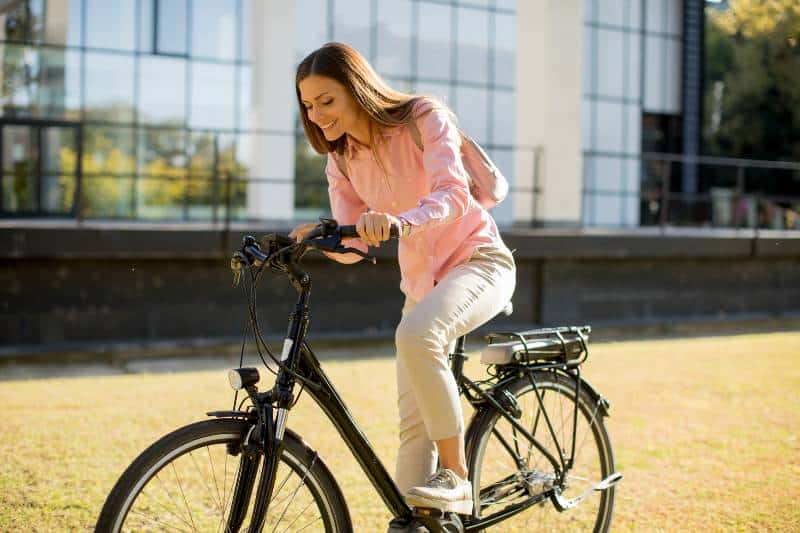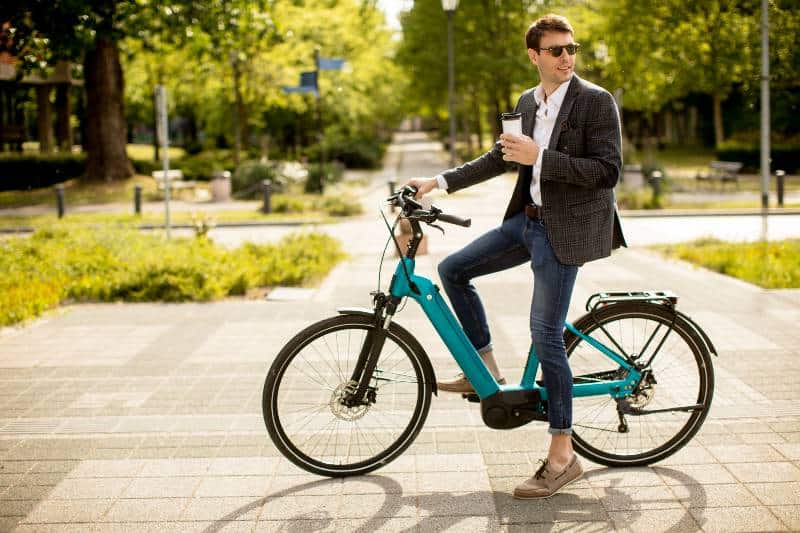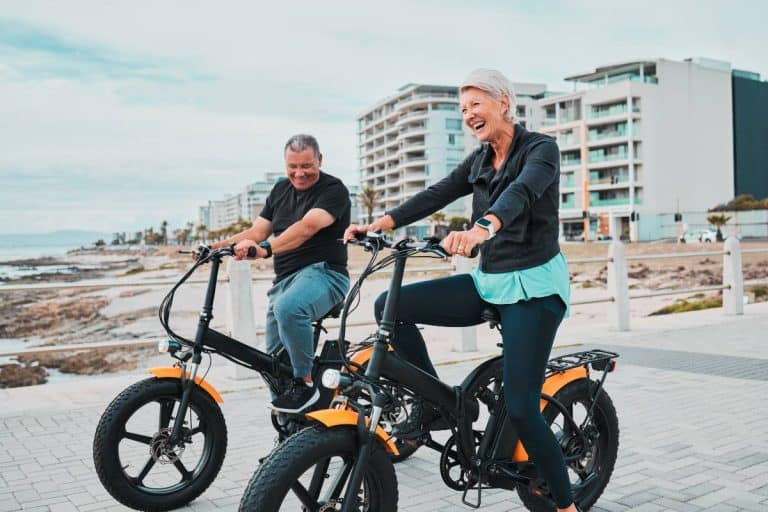Which Ebike Motor Is Right For Me? A Comprehensive Guide
Electric bikes are becoming more and more popular every year. This is because they are a great way to get around town, and they are also very eco-friendly. But before you can enjoy the benefits of an electric bike, you need to choose the right motor for your needs. In this comprehensive guide, we will discuss the different types of e-bike motors available on the market today, and we will help you decide which one is right for you!
E-bike motors come in a variety of sizes, styles, and power outputs. There are also many different types of e-bike motors to choose from, including hub motors, brushless motors, and mid-drive motors.
Key Takeaways
- The motor you choose will depend on your riding type, where you plan on riding, and how much money you want to spend.
- Most e-bikes have a pedal assist mode that allows you to set how much power from the battery will be applied when pedaling.
- The distinction between geared and direct-drive hub motors is more important in practice than that of mid-drives versus hub drives (found at the center of the wheels).

What Do Ebike Motors Do?
Ebike motors are the heart of an e-bike system. They’re the component that converts the mechanical energy from pedaling into electrical energy to power the motor, which in turn powers the bike. In other words, they make it possible for you to ride your bike without having to pedal as hard.
There are many types of e-bike motors, each with its benefits and limitations. Some are more efficient than others, some are faster than others. Some are quieter than others, and some are more durable than others. The right motor for you will depend on what kind of riding you plan to do with your bike and how much money you’re willing to spend on it.
This guide is here to break down all of these considerations for you so that you can pick out the best motor for your needs. We’ll start by discussing the different types of motors available, then we’ll move on to talk about how to choose the right motor for your purposes. By the end of this guide, you should have a good idea of what kind of motor you need.
How do E-Bike Motors work?
There are two types of e-bike motors: those in the crank and those in the rear hub. Mid-drive systems, which combine both styles of the motor into one unit, have become the preferred option in recent years for their efficiency and quiet pedaling experience. When shopping for an e-bike, it is important to consider what type of riding you will be doing most often. If you plan to use your e-bike for commuting or gentle hill riding, a rear hub motor may be a good option for you.
These motors tend to be less expensive than mid-drive motors and offer a simpler installation process. However, rear hub motors can add significant weight to your bike and can make pedaling more difficult on hills.
If you are an experienced cyclist who enjoys challenging rides, a mid-drive motor may be a better choice for you. These motors tend to be lighter weight and offer more torque, making them ideal for climbing hills. Mid-drive motors can be more expensive than rear hub motors and can require more complex installation, but they offer a more powerful and efficient ride.
Types of Ebike Motors
Ebike motors are a great way to get around for several reasons. First, they’re more efficient than regular bikes, meaning you can go faster and farther without getting tired. Second, they’re much more environmentally friendly than cars, so you can feel good about using them without harming the planet. Finally, they’re a lot of fun to ride! Whether you’re going to work or taking a leisurely spin on the weekends, an e-bike is guaranteed to make the trip more pleasurable.
Here are some types of Ebike motors:
1. Front Hub Motors
Benefits of Front Hub Motors
This makes the bike well-balanced and easy to ride. The motor propels you forward as soon as you start pedaling, making it easier for new cyclists to get started on two wheels. When stationary, the motor is quiet; when not in use its weight doesn’t adversely affect a rider’s ability to cycle more than other e-bikes with mid-drive motors do (where extra weight on one side can make balance harder).
Drawbacks of Front Hub Motors
Front hub motors have less traction on dirt roads, so the wheel can spin when you start going up a hill. Some lighter-weight hub motors also lack torque at low speeds—so they’re not good for towing loads on dirt or lots of uphill riding. Changing a tire is not as easy as it looks. You will need to use a spanner (wrench) to do it.
2. Rear Hub Motors
Benefits of Rear Hub Motors
Rear hub motors have several advantages over other types of motors. They tend to provide smoother running and better handling, thanks to their weight distribution. They also offer more traction and require less maintenance. Another advantage is that rotating the sensor means less effort is needed when starting up the motor. This makes rear hub motors an ideal choice for applications where smooth running and good handling are paramount.
For example, they are often used in electric bicycles and scooters. They can also be used in industrial applications, such as material handling or conveyor belts. Thanks to their many advantages, rear hub motors are a popular choice for a wide range of applications.
Drawbacks of Rear Hub Motors
When choosing a motor for your bicycle, there are many factors to consider. One crucial factor is the location of the motor. Rear hub motors are becoming increasingly popular, but they have some drawbacks.
However, a downside to rear hub motors is that they often break spokes more than front hub motors. This tends to happen when there is too much weight on the back of the bike.
Another downside is that it can be harder to change tires on rear hub motors than on front hubs or even easier, on mid-drive motors.
Finally, rear motors can’t be installed on bicycles with hub gears.
But despite these drawbacks, rear hub motors offer many benefits, such as improved traction and mechanical simplicity. So when deciding on a motor for your bicycle, be sure to weigh all the factors carefully before making your final decision.
3. Mid-Drive Motors
Benefits of Mid-Drive Motors
Hub motors and mid-drive motors are the two most common types of electric bike motors. Hub motors are attached to the wheels, while mid-drive motors are placed in the center of the frame.
Each type of motor has its advantages and disadvantages. Mid-drive motors tend to be more efficient than hub motors because they directly drive the cranks. This means that you can get more distance out of your battery. In addition, mid-drive motors keep the weight of the bike low, which can be an advantage, especially compared to the heavier older style hub motors.
Drawbacks of Mid-Drive Motors
While there are many benefits to mid-drive motors, there are also some drawbacks that should be considered. One of the main disadvantages is that generally, you are limited to having one chain ring up front with a mid-drive motor. This can be particularly annoying if you want to retrofit a bike with an engine—you lose access to lots of gears that way.
Additionally, mid-drive motors tend to be more expensive than other types of motors, and they can be heavier as well. However, if you are looking for a powerful and efficient motor for your bike, a mid-drive motor may be the best option for you.
4. Friction Motors
Benefits of Friction Motors
Friction drives offer more power to weight than hub motors, making for a smoother ride and faster acceleration. Friction drives mean no extra weight in the wheels—ideal on the pavement as well as off-road. And they’re also safer because they keep all of your bike’s heaviest components centered where you can control them best (or least dangerously lose control!).
Drawbacks of Friction Motors
Friction-drive e-bikes have several problems that hub motors and mid-drives don’t share.
Efficiency is a problem for human-powered vehicles. The act of rubbing against the tire to power one isn’t very efficient, and much energy—as well as material from your tires themselves—is lost in the process.
5. DIY Systems
Benefits of DIY Systems
The benefits of DIY systems e-bike are that you get to use an electric bike for a very low price. You can also build the bike yourself so that it is customized according to your needs and preferences. If you are looking for an e-bike that is reliable, durable, and easy to maintain, then DIY systems are the way to go
Drawbacks of DIY Systems
The DIY systems are great for people who want to build their e-bike. However, they do have some drawbacks. The first is that the systems are not as efficient as the pre-built kits because they use cheaper parts and less sophisticated engineering. Another drawback is that you will have to have a good understanding of electrical engineering to build your system.
Direct-Drive Hub Motors vs Geared Hub Motors
The terms geared and gearless refer to how power is transferred from the motor and applied to the bike’s drive train.
The distinction between geared and direct-drive hub motors is more important in practice than that of mid-drives versus hub drives (found at the center of the wheels).
What Else to Look For in E-Bike Motors?
If you’re looking at buying an electric bicycle, you’ve probably already decided on the type of motor that’s right for you. But there are still some other things to consider when choosing which bike motor is best for your needs.
Sensor Type
If you’re thinking about investing in an eBike, it’s important to understand the different types of sensors that are available. Cadence sensors measure the rate of pedaling, while torque sensors measure how hard you are pedaling. Both types of sensors have their advantages and disadvantages. Cadence sensors are more accurate, but they can be less responsive than torque sensors. Torque sensors, on the other hand, provide immediate feedback, which can be helpful for beginners. Ultimately, it’s up to you to decide which type of sensor is best for your needs.
To Throttle or Not
The throttle is a great way to get up to speed quickly, especially if you’re in traffic or you’re exhausted from pedaling. However, riders who use the throttle frequently may notice that their battery doesn’t last as long per charge. That’s because the throttle uses more power than pedaling, so if you use it a lot, you’ll go through your battery faster.
Luckily, there are ways to conserve battery power when using the throttle. For example, you can coast downhill or pedal lightly when you’re not using full power. And of course, charging your bike regularly will help to prolong its battery life. So if you’re a throttle user, just be mindful of how much power you’re using and be sure to keep your bike charged up.
Which E-bike Motor is Best for Me?
If you’re looking to buy an e-bike, the best thing you can do is make sure your motor is suited to your needs. Many factors go into deciding which motor is right for you, but here are a few things to keep in mind:
1. How much money do I want to spend?
2. Where do I plan on riding my bike?
3. What kind of terrain will I encounter on my travels?

Types of E-Bike Motors FAQs
Here are some of the most frequently asked questions:
What do Motor Power Ratings mean?
The higher the efficiency rating, the more efficiently the motor converts incoming electrical power to mechanical horsepower. A 150 HP motor with an efficiency level of 96 consumes less energy than a 150 HP engine with an efficiency level of 86.
What size motor is best in an e-bike?
For most people, a motor smaller than 250 W will not be adequate for riding over hills. And if you weigh more than 200 pounds,
What is a brushless motor e-bike?
These electric bike parts are also known as direct-drive or brushless motors. With this type of device, the motor’s axle is attached to the center drive shaft. Copper windings protrude from either side of that axle and create electromagnetic fields when electricity runs through them—which in turn creates torque for driving the motorbike forward:
Conclusion
Ebike motors come in a variety of styles and sizes, each with its benefits and drawbacks. It can be hard to decide which motor is right for you without trying them all out. Here we break down the different types of bike motors on the market so that you can make an informed decision about which one is best for your needs.
With such a wide variety of Ebike motors available, it can be tough to decide which one is best for you. Hopefully, this article has helped clear up some of the confusion and given you a good starting point for choosing the perfect e-bike motor for your needs.






